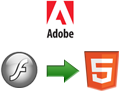TypeScript, how we went from skeptics to converts
September 26th, 2017 by jeremychone | Comments OffThis is the intro of the full blog post TypeScript, from skeptic to convert
We are a small but focused consulting firm that has been developing two to four advanced business cloud and web applications per year for almost a decade, and we have grown to be very mindful about what technologies make it into our recommended tech stack — we are not the kind of consulting company that adopts new technology just because they are hot.
From our experience, it always comes back to these three core principles, Simple scales better, Patterns over frameworks, Runtime first.
At first glance, TypeScript seemed to be the archetype of what we usually avoid, and despite its noble mission statement to add [to JavaScript] without removing [or fixing], we had our original doubts and skepticism, which could be summarized as follows:
- A Microsoft bait and switch strategy?
- Yet another CoffeeScript?
- Angular stuff?
- Can static type be added the JavaScript way?
- Cost v.s. Value?
In its beginning, we could not rule out any of those concerns out for sure, so we decided to give it some time. After a couple of years and many releases, we took a third look this summer, and that was the charm. We turned from being hopeful skeptics to full converts.
Read more on the full blog post TypeScript, from skeptic to convert
Software Evolution: The Five Generations From Mainframe to Mobile Apps to HTML5
March 13th, 2013 by jeremychone | Comments Off|
In short, if we step back and look at the evolution of the software application architecture over the last 20 years, based on these two core characteristics, we can plot the journey of the quest for the perfect Software application model on a decreasing sinusoid depicting five generations, as shown here. |
Read full article at BriteSnow – Software Architecture Evolution
Bored or Boring?
January 1st, 2013 by jeremychone | 8 Comments »With all due respect, and I have some for your very early TechCrunch days, your new post on your ex-blog about how bored you have become made me chuckle.
Chuckle, because it was not the “I am bored and I should do something about it” kind of bored that we all might be once in a while, but rather the typical Arrington way of lecturing an industry by saying “I am bored because you guys are boring.”
Not surprisingly, you have not changed from your tech media mogul days, when you were lecturing the media industry about what was or was not ethical and how real tech journalism should be done, while many could have easily returned the favor if they had a chance or a voice.
Introducing BriteSnow, Inc – We Build HTML5 Enterprise Applications For Web, Mobile, and Tablets
October 24th, 2012 by jeremychone | Comments Off|
|
Beside of all this, the one thing that sets us apart from others is our passion for all of the details surrounding all aspects of an application experience, from server and cloud architecture to UI responsiveness and HTML5 optimization.
We are convinced that HTML is the technology of the future for a large majority of applications from a business as well as a technical point of view. And the thing we discovered during this three years is that with the right architectural approach, building advanced HTML5 applications for PCs, mobile devices, and tablets can be as efficient and scalable as creating desktop or native type of applications.
To accomplish this vision, we created two open source technologies, Snow, which is a Java lightweight server framework based on Google Guice, and brite, an lightweight and DOM Centric HTML5 MVC framework based on jQuery. Both of these technologies are completely free, fully open source (Apache V2 for Snow and MIT for Brite), and are designed to build high-end modern applications using the best of Java on the server, and the best of HTML5 on the client.
We are going to blog quite a bit to share everything we have learned over the last few years about building high end HTML5 applications. So, feel free to follow us on
Twitter, Facebook, or Google Plus.
Feel free to visit us at BriteSnow.com or contact us at info@britesnow.com
Louis Gray now lives in Chrome: Is browser-only the future of software?
September 2nd, 2011 by jeremychone | Comments Off|
There is no doubt that Cloud-based applications is where the growth is, or that Google is currently the most advanced provider of horizontal productivity Cloud-based applications, and that for some users this is plenty enough. The bigger question is this: Are browser-only applications the future of applications? In other words, 20 years from now, will all applications live within a browser? Will Native applications be relegated to legacy applications? |
Why the AT&T deal can’t be good for T-Mobile consumers: Pay double to get half
April 11th, 2011 by jeremychone | Comments Off|
If you are a T-Mobile consumer, here are three things that will happen over time (and yes, the carry-over deal is just a gimmick, as I will explain later). |
Adobe quits Flash, goes full HTML5
April 1st, 2011 by jeremychone | 6 Comments »|
We’ve received word that, in an unusually honest and brave move from a big corporation, Adobe is going to announce that they will officially deprecate Flash in favor of HTML5 for rich Web and mobile experiences. |
A new executive from Adobe is expected to say:
I finally discovered where cloud computing comes from! (Hint: monkeys, again)
April 1st, 2011 by jeremychone | 2 Comments »
Nowadays, any Internet-connected organization is either running its services on a cloud, providing a cloud service, or both. From infrastructure cloud, to platform cloud, to on-premise cloud, cloud computing is everything and everywhere, and this omnipresence begs the two following questions:
How did the Internet work before cloud computing existed?
And, where does cloud computing come from?
The Three Sides of HTML5, and the Only One That Matters.
March 3rd, 2011 by jeremychone | 1 Comment »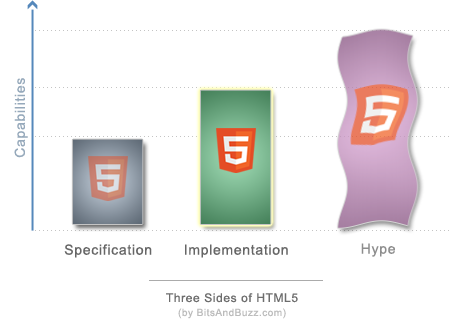
Over the last 12 months, there has been a tremendous amount of buzz about HTML5, and like everything that gets buzz, some good and some bad are coming out of it.
On the good side, the industry is now unanimously agreeing that HTML is a technology of the future and not a legacy one, and there is an amazing competitiveness among its implementers (Mozilla, Google, Apple, and Microsoft). The bad side is that lots of people tend to misinterpret what HTML5 really is, and this confusion is a great source for its detractors to spread FUD around it.
To make sense out of this chaos, it helps to know that HTML5 can be split into three façades, and depending of which you pick, you will have a different appreciation of its readiness and potential.


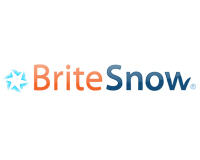
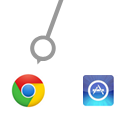 Louis Gray wrote a nice post today
Louis Gray wrote a nice post today 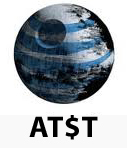 I am not sure if Randall Stephenson, CEO of AT&T, was misinformed, dishonest, or just carried away with his new crusade when
I am not sure if Randall Stephenson, CEO of AT&T, was misinformed, dishonest, or just carried away with his new crusade when 